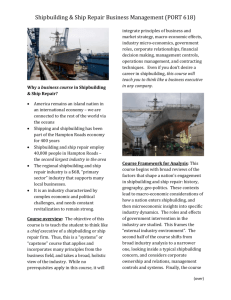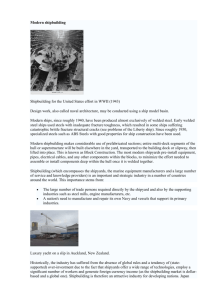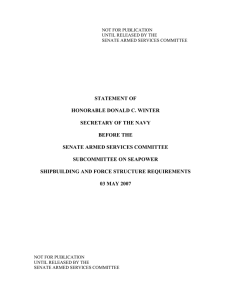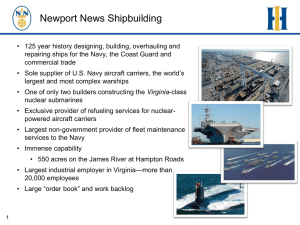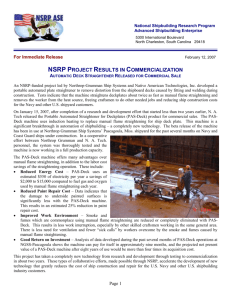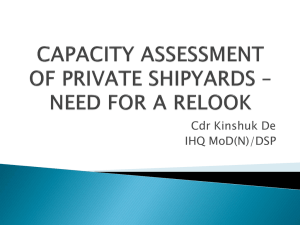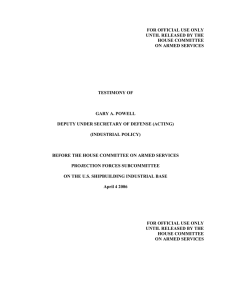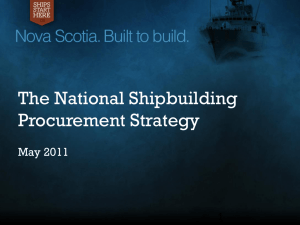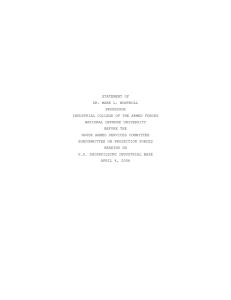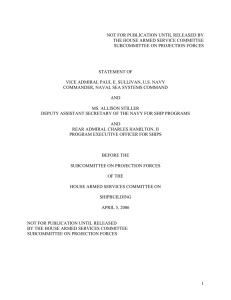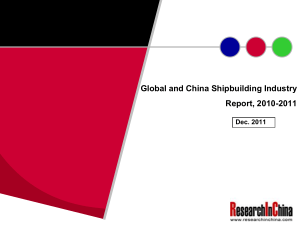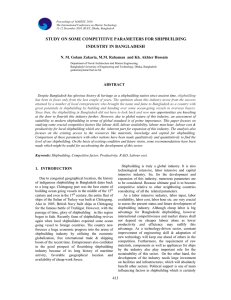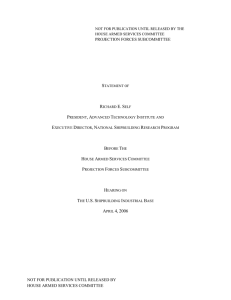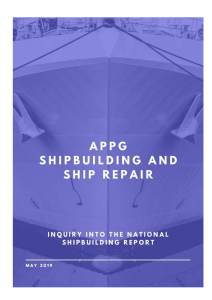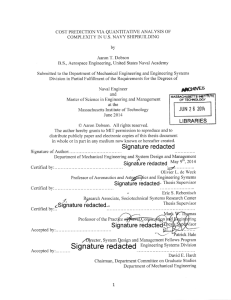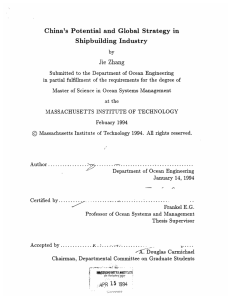PRESS RELEASE
advertisement
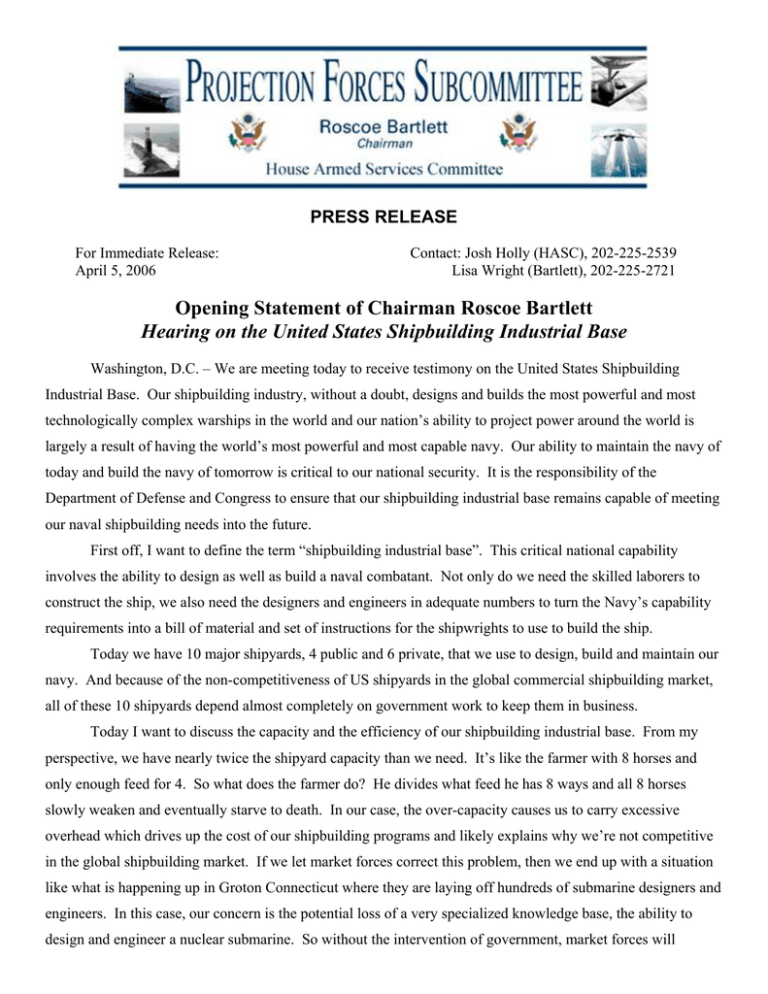
PRESS RELEASE For Immediate Release: April 5, 2006 Contact: Josh Holly (HASC), 202-225-2539 Lisa Wright (Bartlett), 202-225-2721 Opening Statement of Chairman Roscoe Bartlett Hearing on the United States Shipbuilding Industrial Base Washington, D.C. – We are meeting today to receive testimony on the United States Shipbuilding Industrial Base. Our shipbuilding industry, without a doubt, designs and builds the most powerful and most technologically complex warships in the world and our nation’s ability to project power around the world is largely a result of having the world’s most powerful and most capable navy. Our ability to maintain the navy of today and build the navy of tomorrow is critical to our national security. It is the responsibility of the Department of Defense and Congress to ensure that our shipbuilding industrial base remains capable of meeting our naval shipbuilding needs into the future. First off, I want to define the term “shipbuilding industrial base”. This critical national capability involves the ability to design as well as build a naval combatant. Not only do we need the skilled laborers to construct the ship, we also need the designers and engineers in adequate numbers to turn the Navy’s capability requirements into a bill of material and set of instructions for the shipwrights to use to build the ship. Today we have 10 major shipyards, 4 public and 6 private, that we use to design, build and maintain our navy. And because of the non-competitiveness of US shipyards in the global commercial shipbuilding market, all of these 10 shipyards depend almost completely on government work to keep them in business. Today I want to discuss the capacity and the efficiency of our shipbuilding industrial base. From my perspective, we have nearly twice the shipyard capacity than we need. It’s like the farmer with 8 horses and only enough feed for 4. So what does the farmer do? He divides what feed he has 8 ways and all 8 horses slowly weaken and eventually starve to death. In our case, the over-capacity causes us to carry excessive overhead which drives up the cost of our shipbuilding programs and likely explains why we’re not competitive in the global shipbuilding market. If we let market forces correct this problem, then we end up with a situation like what is happening up in Groton Connecticut where they are laying off hundreds of submarine designers and engineers. In this case, our concern is the potential loss of a very specialized knowledge base, the ability to design and engineer a nuclear submarine. So without the intervention of government, market forces will potentially lead us to where we don’t want to be. But politically this overcapacity problem is a very difficult situation to resolve. So I’d be interested in hearing any ideas that you might have on the subject. On the issue of shipbuilding efficiency, we are challenged by the fact that we are in a nearly “sole source” environment. And in this environment, there is little inherent incentive to find efficiencies or find ways to save the customer some money. And add to that the fact that many of our ship procurements use “cost plus” contracts, which do not exactly encourage a contractor to find efficiencies/cost savings. Because of these factors, if we want our shipbuilding industry to embrace new technologies or new processes to make shipbuilding more efficient and/or less costly, then we need to provide external “incentives”. One such effort that has born some fruit is the National Shipbuilding Research Program, otherwise known as NSRP. With a modest investment by the Navy, NSRP brought shipbuilders together in a collaborative environment where they investigated and prototyped tools and processes to find efficiencies in shipbuilding. I hope to hear more about NSRP during testimony today and perhaps some other initiatives that might have similar positive results. From our first panel today, representing the Department of Defense and the Navy, I’m looking forward to hearing what they intend to do to ensure the health of the US shipbuilding industry into the future. And from our second panel, made up of outside experts and a representative of industry, I hope to hear their view of the challenges we face and perhaps some recommendations as to what we can do to increase the quality and perhaps rightsize the US shipbuilding industrial base. ### http://armedservices.house.gov



